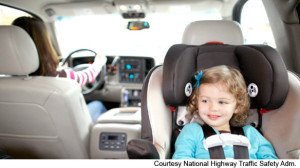Car crashes are a leading cause of death among children ages 1-13, and correct use of car seats is critical when children are in your car. Unfortunately, a National Highway Traffic Safety Administration study found that three out of four children are not adequately protected because they are either in the wrong seat for their age and weight or their seat is improperly installed.
As any parent knows, there are a multitude of car seats on the market – understanding the differences and identifying the proper seat for your loved ones can be a cumbersome task.
To assist in this decision process, many communities observe Child Passenger Safety Week each year in September, culminating in National Seat Check Saturday.
Certified Child Passenger Safety Technicians will be on hand to:
- check your car seat and assist with installation
- provide information to help parents and caregivers choose the right car seat for the child
- give maintenance tips on use of car seats, booster seats and seat belts for children
The effort also promotes the importance of registering car seats with the manufacturer and what to expect should that seat be subject to a safety recall.
To find an event near you – or to locate an inspection site at any time during the year – visit the NHTSA’s Car Seats and Booster Seats page. The site also has information to help you choose the appropriate seat type for your child: rear-facing, front-facing or booster seat.
While all states require safety seats for children, age- and weight-based requirements vary from state to state. Find out about the regulations in your state (as well as states you may be traveling through!) from the Governors Highway Safety Association.
One final piece of advice…there is no guarantee for safety when purchasing a used car seat at garage sales, flea markets or other secondary markets. These seats may be expired (most car seats now have the expiration date molded into the shell of the seat), have missing parts, be damaged, or may have been recalled. There is no way of knowing if these seats have been in a crash and incurred damage that can’t be seen with the naked eye.
This loss control information is advisory only. The author assumes no responsibility for management or control of loss control activities. Not all exposures are identified in this article.

